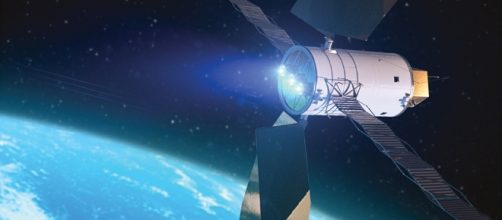The future of space propulsion may well be new technology being developed by two Companies called 'MSNW' and 'Aerojet' under a NASA program called 'Next Step Technologies for Exploration Partnerships' (NextSTEP.) The technology is similar to the electric propulsion system that has sent a number of NASA probes throughout the solar system, including Dawn, which explored Vesta and Ceres, but with many times the power put into it. The program was going to be used for the now defunct Asteroid Redirect Mission but will soon be utilized for the moon and Mars, according to GeekWire.
How does the propulsion system work?
Once a spacecraft has been launched into space with a conventional rocket, the electric propulsion system kicks in. It creates and, then, ejects plasma with electromagnets to create thrust. The engine uses an insert gas such as xenon and argon, but could also use water from the moon, an asteroid or carbon dioxide from the Martian atmosphere. The thrust is relatively low but study, lasting for days and even weeks, creating lots of velocity over time.
The goal is to increase the amount of power that goes into these engines from around five kilowatts currently to about 100 kilowatts. With that kind of power, payloads with huge masses can be moved through Deep Space.
The propulsion system would use less mass as fuel, on the order of 30 percent as opposed to 98 percent with conventional chemical rockets.
What would these new thrusters be used for?
The 100-kilowatt propulsion system could be used to more cargo from low Earth orbit to cislunar space and, eventually, as far as Mars. A lunar mission would move components for a lunar base to the vicinity of the moon from where they can land on the lunar surface using conventional rockets. The system could also be used to move parts of a mission to Mars, say a return vehicle or surface habitats. The system would decrease the cost of deep space exploration.
When is all of this going to happen?
MSNW is going to test a 100-kilowatt thruster on the ground without fuel to make sure that it can stand up to the heat such an engine generates.
Eventually, the technology needs to be tested in space. With the ARM now off the table, such a mission might include a sample return to one or both the moons of Mars or a large probe to the moon, perhaps to prospect for lunar ice. Such missions will depend on the direction from the White House and funding from the Congress.


